Breadcrumb
News archives
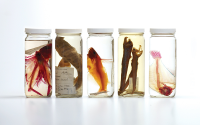
The Underwater Library at Scripps Institution of Oceanography
For decades, the Scripps Oceanographic Collections have amassed millions of marine organisms and geological samples, which continue to yield scientific discoveries long after their preservation
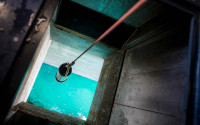
Cause of Historic Ocean Heat Wave off San Diego in 2018
Stifled ocean activity the dominant force behind historic event

Two Scripps Scientists Receive NSF CAREER Awards
Deirdre Lyons and Sarah Giddings receive prestigious awards that support early-career faculty
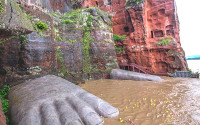
How an Unusually Warm Indian Ocean Caused Flooding on Yangtze River
Climate modelers unravel a mystery with a surprising connection to Australian bushfires and African locust swarms.

Scripps Student Spotlight: Benjamin Davis
Graduate student monitors brine disposal methods from desalination plants and their potential detrimental effects on the ocean
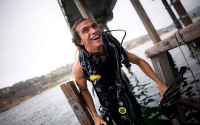
Scripps Student Spotlight: Samuel Kekuewa
Graduate student studies correlation between ocean acidity and coral reefs
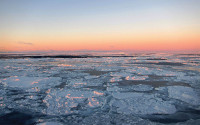
Simulation vs Reality: Researchers Modify Climate Model to Explain Expanding Antarctic Sea Ice
Scientists take one step closer to understanding the enigma of Southern Ocean sea ice expansion despite rising global temperatures
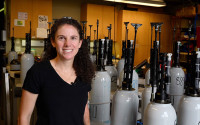
A Scientist's Life: Sarah Purkey
Oceanographer monitors ocean heat content, key driving force behind sea-level rise
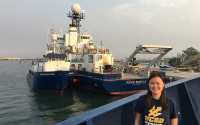
Scripps Student Spotlight: Rachel Chen
Undergraduate student examines cephalopods and their role in the diet of longnose lancetfish
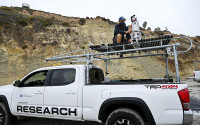
Surveys Identify Relationship between Waves, Coastal Cliff Erosion
Study shows waves, rainfall important parts of erosion process, providing new opportunity to improve forecasts
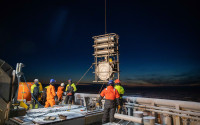
UC San Diego Receives 7 DURIP Awards from Department of Defense
University tops UC system in number of awards
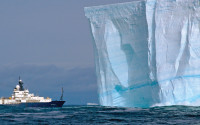
New Study Redefines Understanding of Where Icebergs Put Meltwater into the Southern Ocean
The findings pave the way for large Antarctic icebergs to be used in global climate models
NSF Grants $53 Million to Create a Global Fleet of Robotic Floats to Monitor Ocean Health
New grant will support a consortium of research institutions, including Scripps Oceanography, to build a global array of robotic floats with biogeochemical sensors
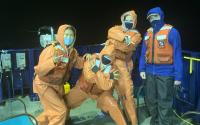
Research Experience aboard R/V Sally Ride a.k.a. 'SWEET BOAT GIG 2020'
Students from around the country get a taste of ship life
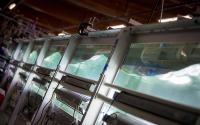
Ocean Microbes Could Interact with Pollution to Influence Climate
Preliminary findings from SeaSCAPE experiment presented at American Chemical Society meeting
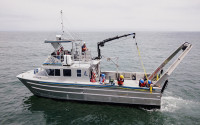
Scientific Workboat Expands Student Research Opportunities
R/V Bob and Betty Beyster is opening up nearshore research off Southern California
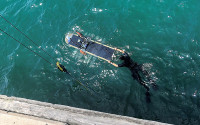
Scripps Institution of Oceanography Partners with NOAA for Unmanned Systems Research
New agreement is to advance unmanned systems research and operations activities for NOAA’s Office of Marine and Aviation Operations
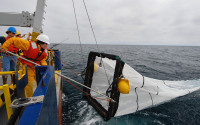
NOAA Selects UC San Diego to Host New Cooperative Institute to Study Marine, Earth and Atmospheric Systems
Selection awards $220 million over five years
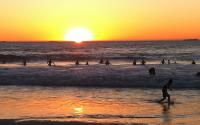
Scientists Identify Climate Change as Major Contributor to Record-Breaking Marine Heatwave
Scripps Oceanography team used a century of ocean data collected by the Shore Stations Program and new method of temperature analysis to put the 2018 marine heatwave in context
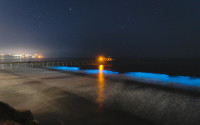
Everything You Wanted to Know About Red Tides
Bioluminescent waves spotted along the coastline, from Baja California to Los Angeles
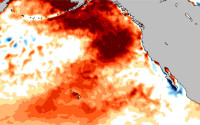
New Study Looks at How the “Blob” Came Back
Scripps Oceanography and CIRES scientists find that weak winds in the Pacific drove record-breaking 2019 summertime marine heat wave

El Niño Impacts on Southern California Estuaries Reveal Potential for More Frequent Closures
Winter storms in 2015-2016 emphasized vulnerability of estuaries that have natural, intermittent mouth closures, compared to those which stay open throughout the year
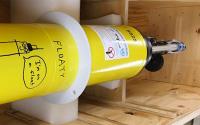
Scientific Resilience During a Pandemic
An aborted research cruise makes the most of the return journey home
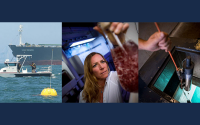
Research in the Time of COVID-19
Despite a deserted campus, some essential Scripps research programs carry on
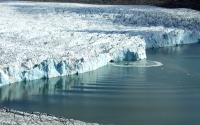
Listen Up: Scripps Scientists Use Underwater Microphones to Study Calving Arctic Glacier
Researchers develop new method for measuring glacial retreat by analyzing underwater acoustic recordings of icebergs falling into the ocean
Pagination
Sign Up For
Explorations Now
explorations now is the free award-winning digital science magazine from Scripps Institution of Oceanography. Join subscribers from around the world and keep up on our cutting-edge research.